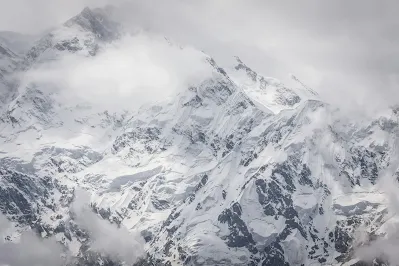Nanga Parbat: The Killer Mountain's Majestic Tale
Outline:
Nestled in the western Himalayas of Pakistan, Nanga Parbat, often referred to as the "Killer Mountain," commands attention as the ninth-highest peak in the world. With its towering summit soaring to 8,126 meters (26,660 feet), Nanga Parbat is a formidable challenge for mountaineers and a symbol of raw, unbridled beauty. In this article, we embark on a journey to unravel the mystique of Nanga Parbat, exploring its history, challenges, and the indomitable spirit of those who dare to conquer its heights.
Geography and Location:
Nanga Parbat, translating to "Naked Mountain" in Urdu, is aptly named due to its imposing, stark appearance. Situated in the Diamer District of the Gilgit-Baltistan region in Pakistan, the mountain is part of the western Himalayan range and the western anchor of the Himalayas. Its isolation from other peaks adds to its prominence, making it a distinct and awe-inspiring feature of the region.
The first recorded European sighting of Nanga Parbat was in 1856 by Sir Henry Lawrence, and it later gained international attention as one of the world's highest and most challenging peaks.
History and Exploration:
Nanga Parbat's history is marked by daring expeditions, triumphs, and tragedies. The first serious attempt to ascend the mountain was made in 1895 by the British climber Albert F. Mummery, who led an expedition aiming for the unexplored Rakhiot Face. However, Mummery, along with two Gurkha companions, disappeared without a trace, leaving the mountain shrouded in mystery.
The successful ascent of Nanga Parbat didn't occur until 1953 when an Austrian-German team, led by Hermann Buhl, summited via the challenging Rakhiot Face. Buhl's solo push to the summit without supplemental oxygen is considered one of the greatest achievements in mountaineering history.
Despite the triumphs, Nanga Parbat earned its grim nickname, the "Killer Mountain," due to the high fatality rate among climbers attempting its ascent. The unpredictable weather, avalanches, and challenging terrain make Nanga Parbat one of the deadliest peaks in the world.
The Rupal Face and Diamir Face:
Nanga Parbat presents two primary faces that attract climbers and mountaineers worldwide: the Rupal Face and the Diamir Face. The Rupal Face, on the southern side, is the highest mountain face on Earth, rising over 4,600 meters (15,000 feet) from base to summit. Climbing the Rupal Face is an extreme challenge, testing the limits of skill, endurance, and mental fortitude.
On the opposite side, the Diamir Face offers a different set of challenges, with treacherous icefalls and seracs. Climbers approaching from the Diamir Face navigate through difficult terrain and challenging ice features, adding to the overall complexity of ascending Nanga Parbat.
Tragedies and Triumphs:
Nanga Parbat has witnessed both heart-wrenching tragedies and inspiring triumphs throughout its history. The mountain's notorious reputation is partly due to the numerous lives claimed during attempts to conquer its peaks. The unpredictable weather conditions, avalanches, and technical difficulties have led to a tragic toll on mountaineers.
One of the most devastating incidents in Nanga Parbat's history occurred in 2013 when a group of climbers was attacked by militants at the Diamir Base Camp. The attack resulted in the deaths of ten climbers, bringing attention to the security challenges faced by those attempting to climb in this remote region.
However, amidst the tragedies, stories of resilience and triumph emerge. The successful summits and bold endeavors by mountaineers, each with their unique tales of determination and courage, showcase the indomitable human spirit in the face of nature's harshest challenges.
Preserving Nanga Parbat's Ecosystem:
As the allure of Nanga Parbat continues to attract adventurers, there is a growing awareness of the need to balance exploration with environmental preservation. Sustainable and responsible climbing practices are crucial to ensure that the fragile ecosystem surrounding the mountain is not unduly disturbed.
Local initiatives, including waste management programs and awareness campaigns, strive to mitigate the environmental impact of mountaineering activities. The involvement of the local communities in promoting responsible tourism is essential to protect the natural beauty that Nanga Parbat represents.
Conclusion:
Nanga Parbat, with its majestic heights and treacherous slopes, stands as both a testament to the human spirit and a reminder of nature's relentless power. The mountain's history, marked by triumphs and tragedies, adds layers of complexity to its mystique. As climbers continue to be drawn to the challenge of Nanga Parbat, it is essential to approach its slopes with respect, recognizing the delicate balance between exploration and conservation. In the shadow of the "Killer Mountain," the tales of daring ascents and the enduring spirit of those who venture forth continue to captivate the imagination, ensuring that Nanga Parbat remains an icon in the world of mountaineering.








0 Comments